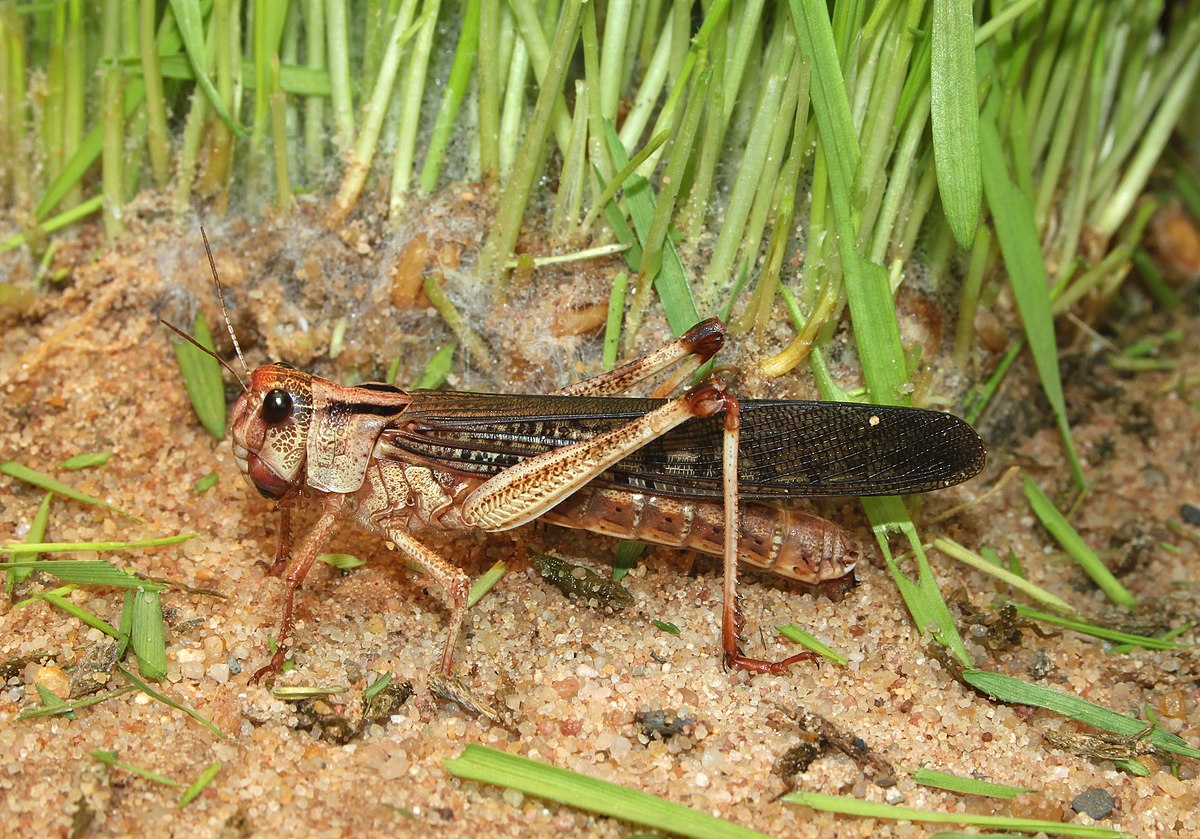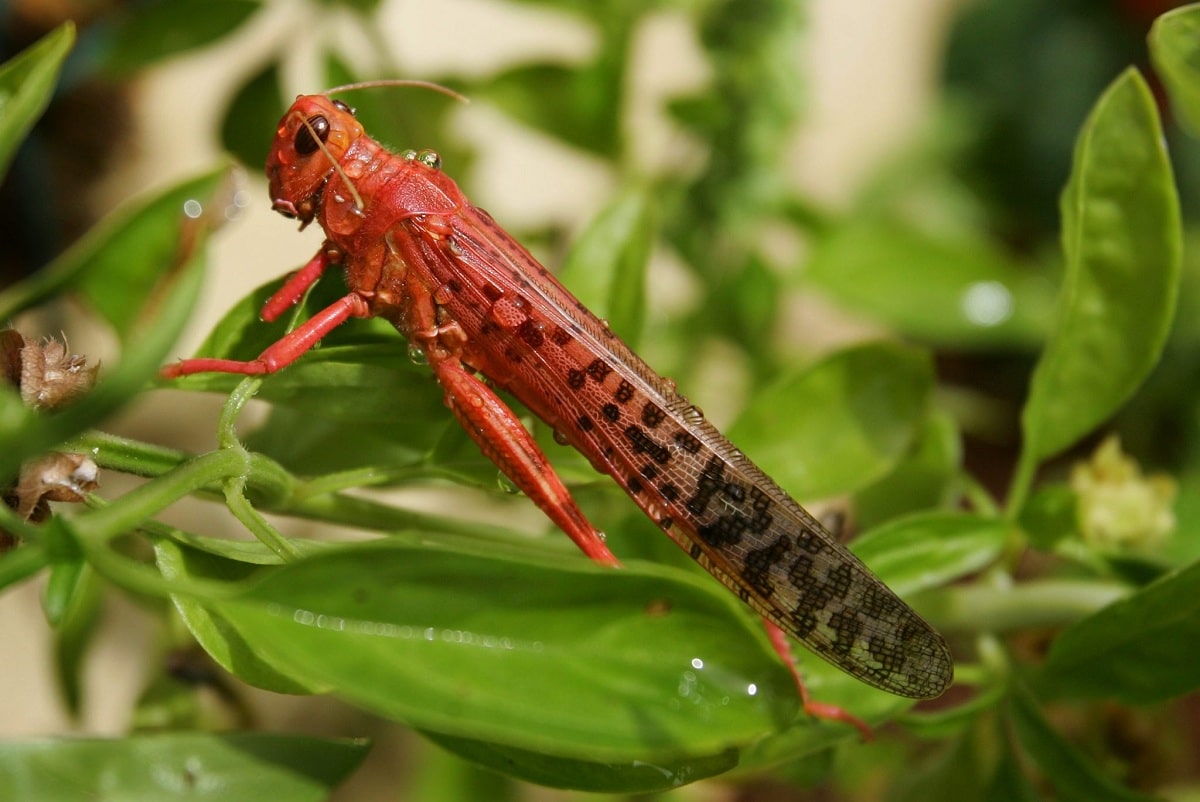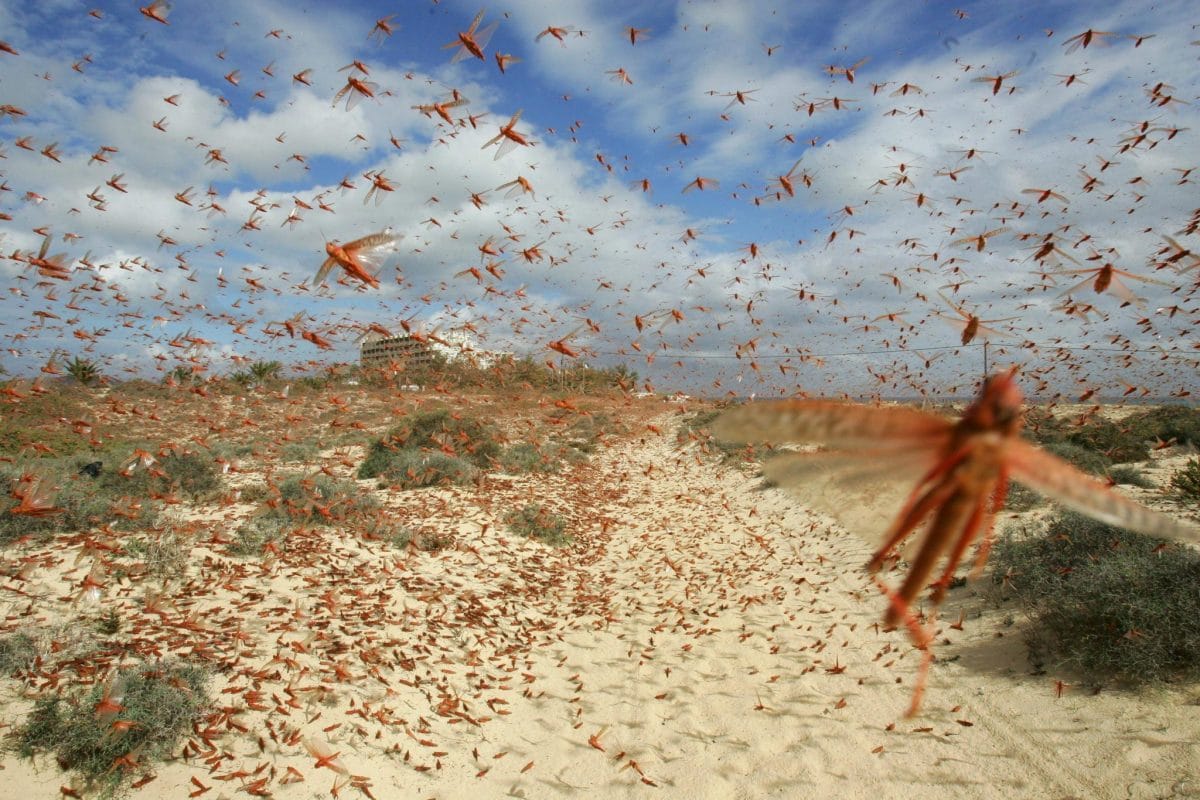
In the world there are numerous species of insects capable of multiplying at high speed. Many of them have the potential to become pests that can cause serious damage to ecosystems and cause problems for humans. One of them is the locust plague. It is one of the most damaging and threatening risks to world agriculture. And it is that they can cover up to 100 kilometers a day and wipe out all the crops they pass through.
Therefore, we are going to dedicate this article to tell you everything you need to know about the plague of locusts and their possible control.
Key features

The locust infestation has become a food security risk in many southern countries. Throughout history, the plague of locusts has generated great famines and their total extinction is still far from being a reality. Because the speed with which they move and the number of individuals there are, not to mention the speed of reproduction, make their management and control difficult.
It has significantly affected agricultural activity for millennia and could only be effectively controlled through the application of certain political and scientific measures from the beginning of the XNUMXth century. It is around this time that he began to reduce the damage caused by this pest of insects. It has become one of the most damaging pests for agricultural activities. They can migrate great distances and destroy growing areas in search of food.. They travel at high speed through thousands of kilometers they went in great luxury.
The current situation of locust plagues in different regions of the planet are studied by researchers from various universities. It is important to know their behavior over time to be able to predict their migration. There are many species of locusts, but the most devastating is the Gregarious schistocerca. This species affects more than 50 countries, some of which are still under development. Other countries affected by locust infestations are those that cannot have sufficient resources to cope with the damage caused.
Behavior and biology of the locust infestation

Lobsters are insects that belong to the Orthoptera order within the Acrididae family. This family is included more than 5.000 known species of which several hundred of them are those that generate damages and only about twenty of them cause terrible devastations. Most of all these species are migratory and can move long distances generating pests.
The plague of locusts is nothing more than a massive manifestation of certain insects that occurs when the environment where they live changes from a solitary phase to a gregarious phase. The solitary phase of lobsters corresponds to their breeding area. They are usually in times of rain and when food can be provided. The locust plague was unleashed when the dry season begins and food is scarce. This is when the insects become stressed and begin to physically transform, modifying their size, color and shape and begin to migrate to other sites in search of food.
It is then when they become active animals and begin to generate damage everywhere. The ease of their movement makes it difficult to control the invasions of the different agricultural ecosystems. Not all insects are the same, but when they plant eggs in the fall, they lie dormant throughout the winter and hatch in the spring. After a period that ranges between 40-90 days, fertilization and egg laying occurs. It is then that the adults bite and the biological cycle begins again.
Each egg laying turns into 100 potential lobsters. It has been calculated that on some occasions they can reach 30.000 million copies.
Locust infestation

We have spoken that it is a plague capable of covering about 30 million square kilometers. The Gregarious schistocerca It is the most harmful pest in the world and presents several generations per year. Swarms can invade areas that cover 30 million square kilometers. At present, they are largely affecting Africa and all of Southeast Asia. They can also fly in the Canary Islands where they have remained for several days until they disappear.
The wood that this type of lobster has to move is to find the right place for settlement. If they don't find it, they devastate everything they find and move elsewhere. Keep in mind that lobsters exist on all continents and pests break out roughly every 3-4 years. However, if you have a study and well-documented information, it is known that there has been no insecticide so far a means for its complete destruction.
The most important thing is to know when the locust infestation can occur. If the places where these animals begin to spread begin to be controlled, the plague can be appeased and controlled. For example, in Spain two species are known to attack crop fields and they always appear in successive periods. It is at this time that approved phytosanitary insecticides begin to be used for their control.
Pests in Spain
It should also be mentioned that locust plagues in our country are not a very big problem. Despite this, agronomic services in Spain are in charge of controlling pests well and knowing where these insects will evolve when they went from the solitary phase to the gregarious phase. That is where it is convenient to kill them at their source.
Several researchers affirm that climate change can change life habits and their transfer to areas where before they did not cause serious incidents. I mean, this can still get worse.
I hope that with this information you can learn more about the locust plague and its characteristics.